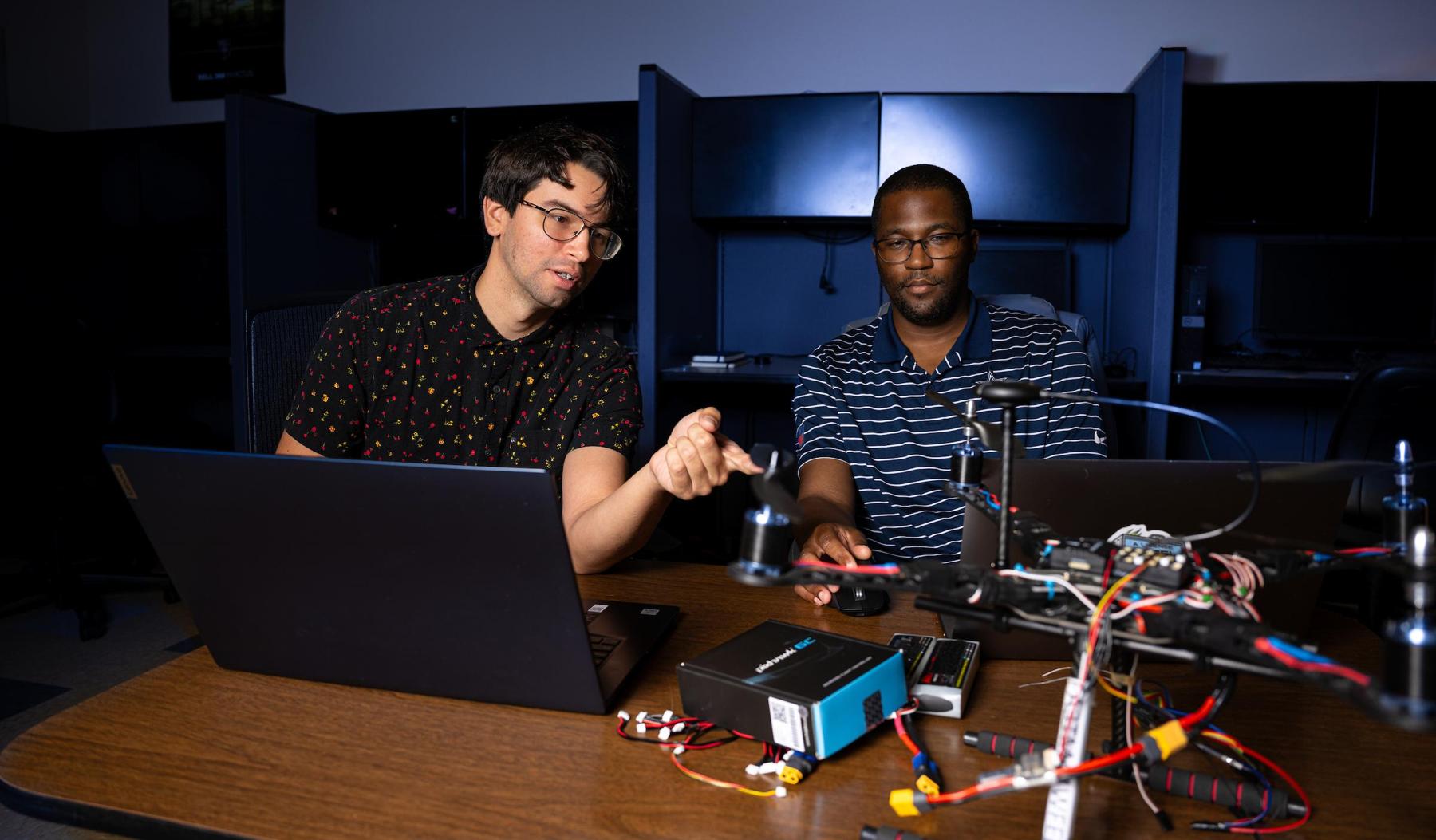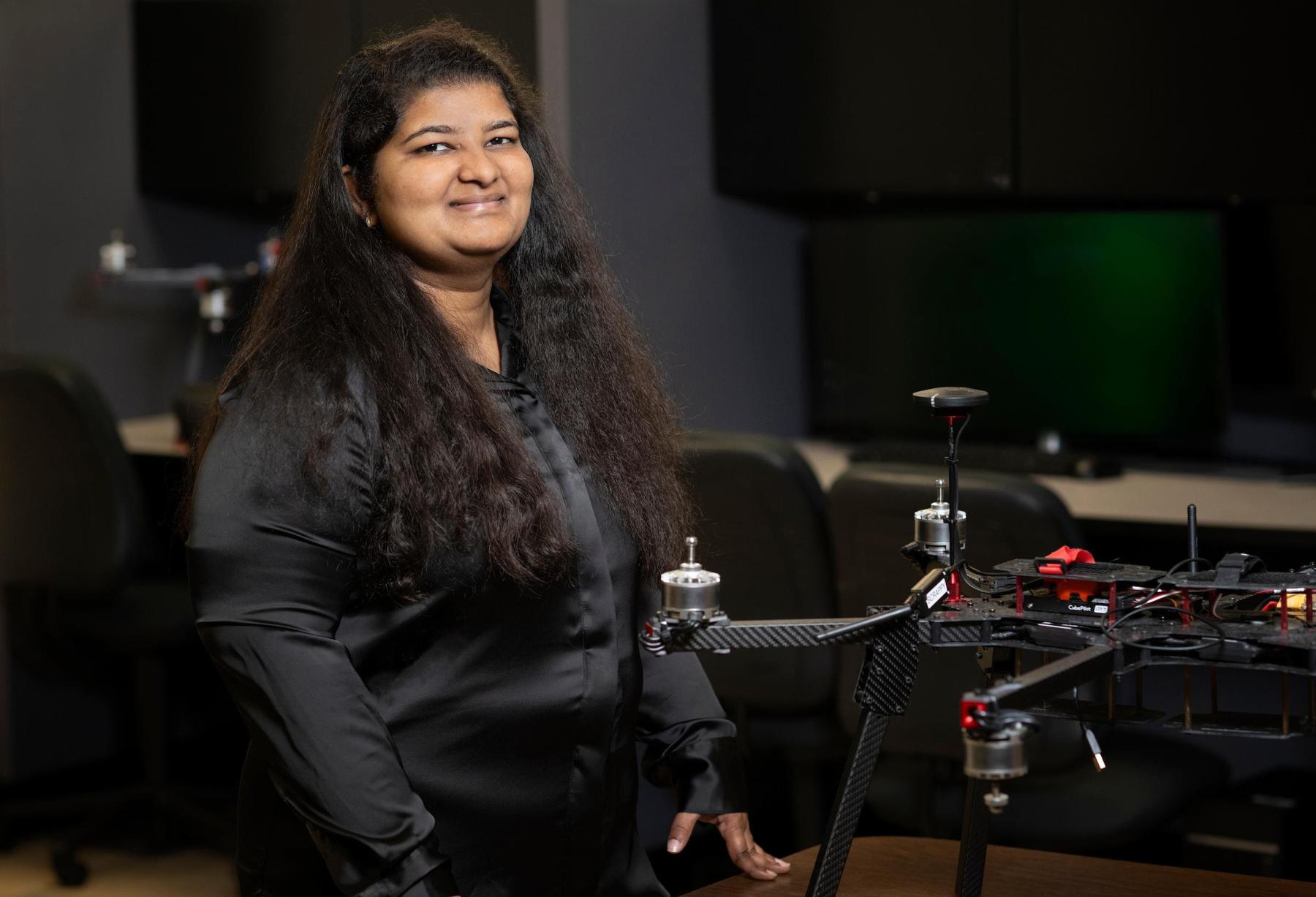
DENTON (UNT), Texas — Students at the University of North Texas Center for Integrated Intelligent Mobility Systems (CIIMS) are taking flight, both at the university and beyond.
Nelson Ruiz and Roderick Jones, seniors in UNT’s College of Engineering, work as undergraduate research assistants for a project that hosts a data hub for drones.
Jaya Sravani Mandapaka, a doctoral student in the College of Engineering, specializes in communications between automated drones.
All three are helping shape the future of aerial drone technology in America. It’s one part of the broader mission of CIIMS to transform transportation and mobility.
Established in 2020, the center is focused on integrated, intelligent mobility systems as well as creating solutions for the systems’ complexities, such as the technology, data and policy. It brings together more than 50 researchers across disciplines, from the College of Engineering and the G. Brint Ryan College of Business to the College of Information and College of Health and Public Service. Students are an integral part of that research as well.
Ruiz and Jones work on Project Hermes within CIIMS. They help maintain and improve communication between servers that operate drones.
“Think of it like a warehouse,” Ruiz said. “Instead of actual equipment, we have three kinds of data that we store and send. We give that out to the other servers and clients, and they’ve used it to build user interfaces, flight simulations, and protocols. Essentially, they can do what they like with our data. Just like when a warehouse gives out their tools.”
One server collects data on the locations of in-flight drones, their destinations and their assigned flight path. It also collects data on potential issues such as bad weather. Those issues are than sent out as an alert to other servers.
The duo says the servers operating the drones then use that information to pick new flight paths or decide if they should recall the drone.
While Ruiz and Jones act as air traffic controllers for the drones, Mandapaka works as the pilot. The drones are automated — however Mandapaka and her fellow researchers at CIIMS program the systems that allow the drones to fly without colliding into one another.
Mandapaka models drone flights in simulations and then programs the drones based on the results. UNT collaborates with companies and their certified drone pilots test the programming with outdoor test flights at UNT’s Discovery Park. Soon CIIMS will open a $1.2 million outdoor Advanced Mobility Test Facility for researching autonomous air and ground vehicles, which will be the first of its kind in Texas.
Mandapaka recognizes the importance of preventing midair collisions between drones.
“It’s necessary for the safety and security of the people on the ground and for people who are traveling,” Mandapaka said.
Their research will contribute to the use of autonomous drones across the country for personal and corporate use.
Mandapaka, Ruiz and Jones have all had the opportunity to work under UNT Professor of Electrical Engineering Kamesh Namuduri. Their efforts are helping them to “grow as engineers”.
“Through CIIMS, UNT is engaged in many facets of Advanced Air Mobility,” Namuduri said. “Our students are helping us explore solutions to complex problems that will be key to navigate as we prepare for a future where unmanned aerial vehicles are the norm in our skies.”
For Mandapaka, she applied for and received the 2023 C. Michael Walton Fellowship awarded by the Center of Transportation Research at University of Texas at Austin. The fellowship included a nearly $8,000 stipend that allowed Mandapaka to propose, research and present her findings on a chosen issue the transportation sector faces before a panel. She was also able to attend the 2023 Innovation Invitational, an event centered on transportation research, hosted by the Texas Innovation Alliance in Austin in July.
“The fellowship awarded to Jaya is a recognition for UNT’s research in Advanced Air Mobility,” Namuduri said. “This is a demonstration of the quality of education and research in our department, college and university. We are very happy for her.”
After receiving her doctorate, Mandapaka plans to continue research on drone communications.
For Ruiz and Jones, they agreed that working on Project Hermes is giving them better insight into what their future employment might be like.
“When you’re in school, you have a syllabus. It’s a direct point from A to Z,” said Jones, who hopes to eventually work with electromagnetics. “Whereas with projects like this, we have no clue where to start and it’s wide open.”
Ruiz added that communication is key as well.
“In the future we’ll have to talk to our clients and third parties,” said Ruiz, who is interested in a career in digital design. “And communicating with your team members also is important.”
